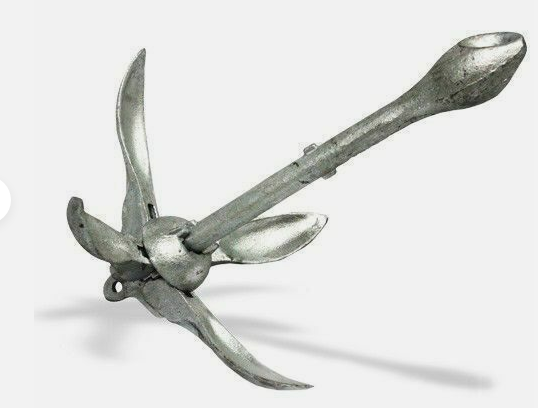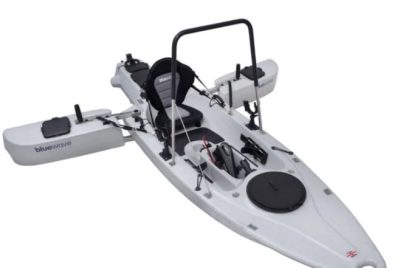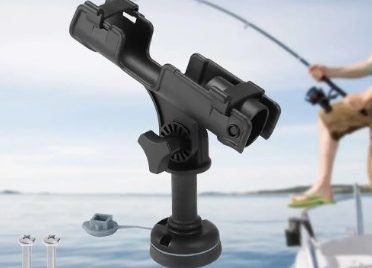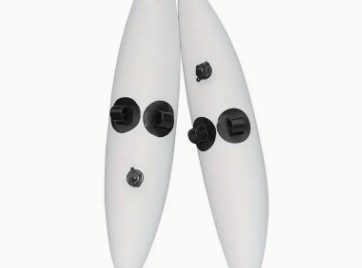Fishing Kayak Anchor
Introduction
As an avid kayak angler, I can’t stress enough how essential a fishing kayak anchor is for a successful day on the water. Whether you’re a seasoned pro or just getting started, having a reliable anchor can make all the difference in your fishing experience. In this article, I’ll share my personal insights and provide helpful suggestions on why you need a fishing kayak anchor, the various types available, how to choose the right weight, anchoring techniques, safety considerations, and much more. So, grab your paddles, and let’s dive in!
Why You Need a Fishing Kayak Anchor
Picture this: you’re out on the water, casting your line, and suddenly a gust of wind or a current starts pushing you away from your prime fishing spot. Without an anchor, you’ll spend more time struggling to stay put than actually fishing. That’s where a fishing kayak anchor comes to the rescue.
In my experience, having an anchor not only keeps you stable but also allows you to focus on your fishing, making the entire experience more enjoyable. You can control your position, target specific fishing spots, and avoid drifting away from your hotspot.
Types of Fishing Kayak Anchors
When it comes to fishing kayak anchors, you have several options to choose from. Here are some popular types:
1. Grapnel Anchor
Grapnel anchors are a versatile choice suitable for a wide range of water conditions. They have multiple hooks and folding arms, which help secure your kayak effectively.
2. Mushroom Anchor
Mushroom anchors are perfect for calm waters. Their design allows them to hold well in sandy or muddy bottoms. However, they may not be ideal for strong currents.
3. Stakeout Poles
Stakeout poles are a favourite among kayak anglers. They are easy to use and allow you to anchor quickly in shallow waters. They’re particularly handy for sight fishing.
4. Drift Chutes
Drift chutes, also known as drift socks, slow down your kayak’s drift. While they don’t anchor you in one spot, they are useful for maintaining a controlled drift.
Each type has its pros and cons, and the choice depends on your preferred fishing locations and water conditions.
Choosing the Right Anchor Weight
Selecting the appropriate anchor weight is crucial for its effectiveness. The weight you need depends on your kayak’s size and the conditions you’ll be fishing in. A general rule of thumb is to use one pound of anchor weight for every three feet of your kayak’s length.
However, consider additional factors such as wind, tide, and current strength. In windy conditions or strong currents, you may need a heavier anchor to stay put.
Anchoring Techniques
To make the most of your fishing kayak anchor, you need to master anchoring techniques. Here are some useful methods:
1. Bow and Stern Anchoring
Using both a bow and stern anchor allows you to pivot your kayak to face the wind or current, making it easier to fish in any direction.
2. Trolley Systems
Trolley systems are a fantastic addition to your kayak. They enable you to move the anchor along the length of your kayak, adjusting your position without re-anchoring.
3. Drag and Drift Anchoring
This technique involves dragging the anchor behind your kayak. It’s excellent for trolling or drifting with the current.
Safety Considerations
Safety should be your top priority when using a fishing kayak anchor. Always keep the following in mind:
- Use a quick-release system to free yourself from the anchor in case of emergencies.
- Attach a float to the anchor line so you can locate it easily.
- Ensure your anchor line doesn’t interfere with your fishing gear.
- Keep an eye on changing weather conditions and water currents.
Best Practices for Anchoring in Different Conditions
Anchoring effectively varies depending on the water conditions you’re in. Here’s how to handle various scenarios:
Anchoring in Rivers
Rivers can have strong currents. Use a heavier anchor and consider a trolley system for easy repositioning.
Anchoring in Lakes
Lakes often have calmer waters. A mushroom anchor or stakeout pole may suffice.
Anchoring in the Ocean
The ocean’s tides and waves require a sturdy anchor. A grapnel anchor or multiple anchors for bow and stern are recommended.
Maintaining Your Fishing Kayak Anchor
Your anchor is an investment, and proper maintenance can extend its lifespan. Rinse it with fresh water after each use, and store it in a dry place. Check for signs of wear and tear, such as rust or bent prongs, and replace any damaged parts promptly.
Alternative Anchoring Solutions
If you’re feeling DIY-savvy, there are alternative methods for anchoring your kayak. You can use sandbags, PVC anchors, or even try a homemade anchor trolley system. While these options may not be as convenient as commercial anchors, they can be budget-friendly and effective.
Environmental Impact
Responsible anchoring is essential to protect the environment. Anchors can damage underwater habitats, so be mindful of where and how you anchor. Opt for anchors designed to minimize environmental impact, and always follow local regulations and guidelines.
Personal Success Stories
Let me share a personal success story to emphasize the significance of using a fishing kayak anchor. On a windy day in my favourite fishing spot, I anchored my kayak and reeled in one catch after another. The anchor kept me in the sweet spot, and I couldn’t have had a more successful day. This is just one of many experiences that have convinced me of the value of a fishing kayak anchor.
Top Brands and Products
I have tried various anchors over the years, and some brands have consistently stood out. Here are a few recommendations:
Each of these products offers reliability and effectiveness, making them great choices for kayak anglers.
Tips for Beginners
If you’re new to kayak fishing and using an anchor, here are a few tips to get you started:
- Practice anchoring in calm waters before venturing into challenging conditions.
- Familiarize yourself with your anchor’s quick-release system.
- Always wear a personal flotation device while on the water.
Final Thoughts
In conclusion, a fishing kayak anchor is a must-have accessory for any kayak angler. It enhances your fishing experience, provides stability, and allows you to concentrate on what you love—catching fish. From choosing the right type and weight of anchor to mastering anchoring techniques, there’s much to explore in the world of kayak fishing with an anchor.
So, don’t let the wind or currents dictate your fishing day. Invest in a quality anchor, stay safe, and enjoy the tranquility of angling in your fishing kayak. It’s an experience like no other.
FAQs
1. Can I use a regular boat anchor on my fishing kayak?
- While it’s possible, it’s not recommended. Kayak-specific anchors are designed for the unique needs of kayak anglers, ensuring better performance and safety.
2. What’s the best anchor type for beginners?
- For beginners, a grapnel anchor is a versatile choice suitable for various water conditions and relatively easy to use.
3. Are there any eco-friendly kayak anchors available?
- Yes, some anchors are designed to minimize their environmental impact. Look for options that prioritize protecting aquatic ecosystems.
4. Can I make my own kayak anchor at home?
- Yes, you can create DIY kayak anchors using sandbags, PVC pipes, or other materials. However, be sure to choose materials that are safe and effective for anchoring.
5. Do I need any special tools to install a trolley system for my anchor?
- Installing a trolley system is relatively straightforward and typically requires basic tools like a drill, screws, and a measuring tape. Many tutorials are available online to guide you through the process.




